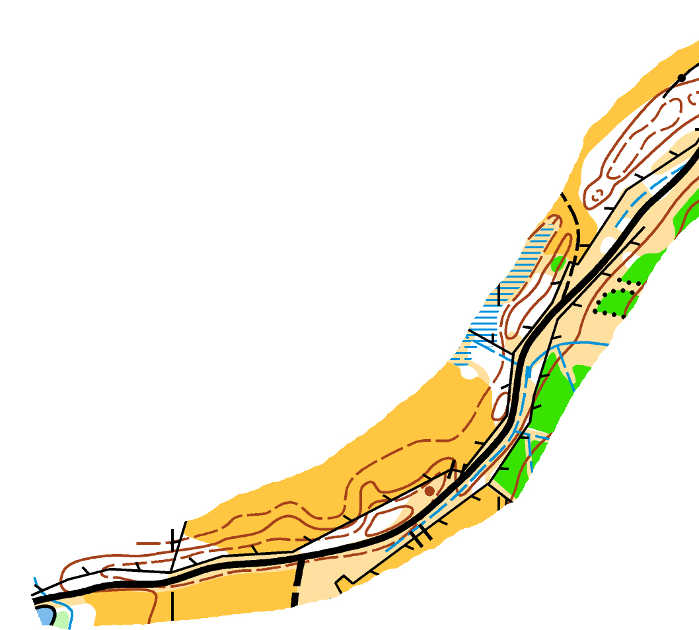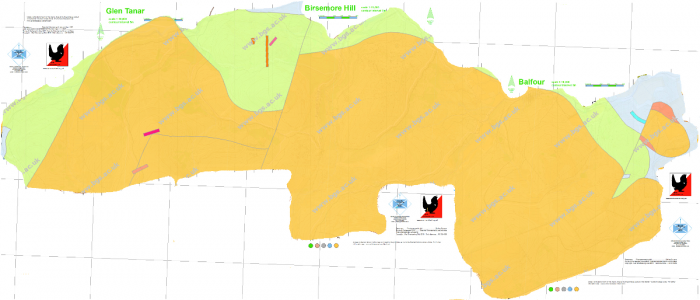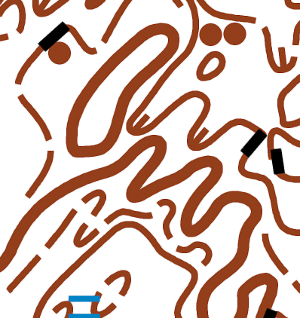Local Geology Day 1
Notes on Geology and Topography of the Glen Tanar Area
Geology
The Dee valley in the Aboyne area is notably wider than it is upstream from Ballater. The hills on either side are set back much further and there is a significant area of cultivated land on the valley floor between them. This difference arises from the presence downstream from Cambus o’ May of an outcrop of the Deeside Limestone Formation which is much less resistant to erosion than the granitic rocks that outcrop in the hills on either side.
A similar pattern of rock outcrops occurs in the part of Glen Tanar where the event arena is located. Less resistant rocks similar to the Deeside Limestone underlie this wider part of the valley and tougher granites form most of the higher hills on either side. Not much further upstream (and outwith the competition area), the Water of Tanar cuts a steep-sided valley into the main granite outcrop where heather and pine forest predominate. Cycling up this valley is a great experience for those wanting more exercise(!), especially if the trip is rounded off with the short steep climb to the summit of Mount Keen.
The map above is the combined competition areas for Days 1 to 3 with the geology superimposed (from the BGS Geology of Britain online viewer). Granite predominates and is represented by the yellow brown colour. Some minor intrusions of chilled granite in Glen Tanar are shown as short red and orange lines. The other colours represent older Dalradian metamorphic rocks that the granite rose up into as magma over 400 million years ago.
Within the main part of the competition area, nearly all the boulders and crags are of granite. Other rock types are only found on the lower valley sides stretching NE from the arena and on the hill that forms the north-eastern corner of the map. The difference is not immediately obvious, however, since these other rock types (metamorphosed sandstones with occasional mudstones) are similarly pale, tough and associated with equally impoverished soils. One difference that you might see in boulders is the more slabby character of the metamorphic rocks when compared with the blocky shape of the granite boulders.
All of these rocks are crystalline and were formed at depths of several tens of kilometres when colliding tectonic plates thrust thick sequences of sedimentary and volcanic rock down into the hotter regions of the Earth’s crust. This is a story that will be explored in more detail in the descriptions below for competition areas for Days 4 to 6.
Topography
A lot of the smaller scale topographic features shown on all the competition maps owe their origins to the action of meltwater during the last two million years or so. We now know that there have been scores of ice-sheet advances and retreats during this period, though many were only of limited extent and duration. As each glacial period ended, new channels, gullies, and gorges were carved into the landscape wherever rapidly flowing torrents of meltwater flowed along the interface between the ice and the land surface below, and also where these torrents eventually emerged from beneath the ice.
On your maps, the features formed by such processes include re-entrants, small hills and deep valleys with hardly any water flowing in them. Valleys occupied by significant streams today are also likely to have been deepened by such short-lived torrents, especially where there are steep-sided gorges that look out of proportion to the streams currently flowing through them.
Map detail showing a series of NE-trending channels cut into bedrock by short-lived meltwater torrents.
Wherever there are features created by meltwater erosion, there are corresponding deposits somewhere downstream of the sand, gravel and boulders carried away by the rushing water. These deposits can take many topographic forms on your map – anything from mounds and ridges to extensive relatively flat areas, often with depressions where blocks of unmelted ice were surrounded by sand and gravel. Hollows left when isolated ice blocks melted are very common on Deeside and range in size from a few tens of metres across to the large depressions occupied by Lochs Kinord and Davan.
There is one particular form of meltwater deposit on the Glen Tanar map which has a unique origin and which only rarely survives subsequent erosion. This is the esker that that runs parallel to the track on the right-hand side as you drive the last kilometre towards the parking field. Eskers are long winding ridges of sand and gravel that can look like railway embankments when perfectly preserved. They are deposited on the floors of icebound tunnels by rivers draining meltwater that has descended from the surface of decaying ice-sheets. The once continuous esker at Glen Tanar has been eroded since it was formed and now exists as a series of low ridges interrupted by post-Ice Age drainage systems.
 Glen Tanar map extract with contours outlining an example of an esker (see text).
Glen Tanar map extract with contours outlining an example of an esker (see text).

